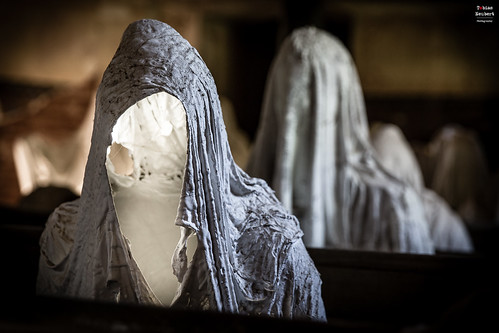For nearly fifty years, St. George’s Church in the village of Lukova, in Czech Republic, lay abandoned. The last congregation held in this 14th century church was in 1968, when a funeral service was in progress and the ceiling and part of the roof collapsed sending everyone running outside. The terrified locals took it as a bad omen and never ventured inside. The church slowly crumbled away while sermons and services were held outside. The communists looted everything of value that was inside —paintings, statues, the church bell and the clock tower. The church organ was damaged.
Cut to 2014. A professor at the Department of Design and Fine Arts at the University of West Bohemia asked his third-year Bachelor students to a find a suitable but dilapidated church for an installation artwork. Each student was to find for themselves their own church. Some students found churches that had only the foundation or a few walls, but Jakub Hadrava, knew exactly where to find an abandoned but nearly intact church.
Jakub Hadrava got in touch with a local resident, Petr Koukl, who became intrigued at the prospect of having the church repaired. Although in disrepair, St. George’s church was in good shape. Its roof was damaged but the interior was still functional, and that’s all Hadrava needed for his sculptures.
Hadrava built more than a dozen life-sized ghostly figures dressed in robes and seated them in the church’s pews. He explains how he made the figures:
I decided to make figurative sculptures from plaster, which means getting the help of models who you prepare to cast. In my case, the models were fellow students. I did one cast in the church itself but after that I made a copy of the bench or pew and cast the sculptures at school. It means wrapping the model in plastic and a raincoat to protect their skin, then adding the different textiles dipped in plaster to create the overall shape and their hoods. A single statue, with a little luck, took around half-an-hour to complete.
Hadrava ghostly installation attracted an enormous amount of attention bringing visitors from all around the world. Petr Koukl says they had visitors from Germany, England, Australia, Brazil, Russia. Eventually, this project kickstarted an interest in saving other dilapidated churches in the area.
Petr Koukl has now raised enough fund to install a new roof. He hopes the church will soon be restored to its former glory.
Source : www.czech.cz







